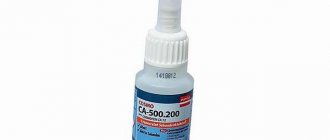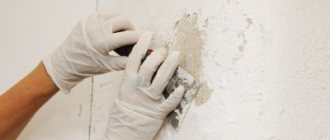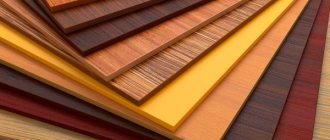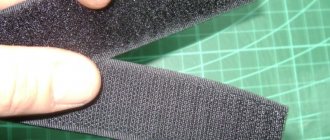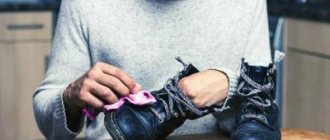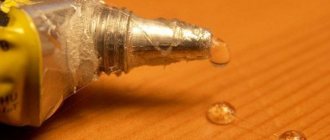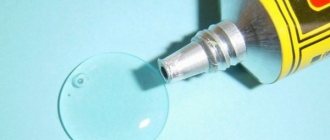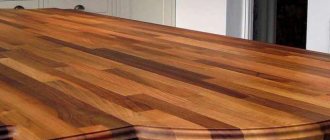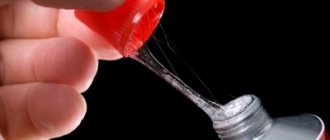How much does it cost to dismantle linoleum?
The price range for this procedure is wide. On average, if you are going to re-lay linoleum, the cost of dismantling will be 50% of the cost of laying new linoleum. Expressed in numbers, approximately 70-150 rubles per square meter - this is the price of dismantling old linoleum.
Interesting materials:
How to connect a wired microphone to a PC? How to connect a wired keyboard to iPad? How to connect wired speakers to a laptop? How to connect wired iPhone headphones to a computer? How to connect wired headphones from iPhone to Android? How to connect PS Plus for 3 months? How to connect PS3 to old TV? How to connect PS4 via TV box? How to connect PS4 to MacBook via HDMI? How to connect PS4 to PS5?
Why do you need to clean the concrete surface from tile adhesive?
The concrete surface must be cleaned and prepared before applying waterproofing, protective or decorative materials. Any foreign substance on it can reduce the bond strength of the concrete and the coating.
Without cleaning the concrete surface from contaminants, it is impossible to obtain either high-quality penetrating waterproofing or a durable decorative coating. After all, old tile adhesive completely closes the pores of concrete, so any waterproofing or protective impregnation will not be able to penetrate deep into the structure of the material and will not fully perform its functions.
It is important that there are no active chemical and biological substances on the concrete, and glue residues may contain them, for example, mold or mildew
The choice of method for cleaning a concrete surface depends on the composition of the adhesive that was used to lay the tiles. To fix the tiles, completely different chemical compositions can be used, with different hardening times and different adhesion strengths to concrete. Therefore, before you begin cleaning concrete, it is advisable to determine the type of adhesive used in order to choose the most effective method for removing it.
How to remove sticky label from plastic?
How to remove glue from plastic stickers
- Rub the plastic
with a mixture of baking soda, water and a few drops of any cleaning gel. ... - Heat the sticker with a hairdryer. ...
- Wipe off the sticky composition with solvent, kerosene, alcohol or table vinegar.
Interesting materials:
When will Red Square open? When does navigation 2019 open? When does navigation on the Volga open? When is Social Teacher Day celebrated? When is HR Day celebrated? When was serfdom abolished? When is a comma placed before a single conjunction? When to replant basil in the ground? When did Peter 1 go to Europe? When is it necessary to change winter tires according to the rules?
Types of tile adhesives
Depending on the composition, tile adhesives are divided into the following types:
- cement-based adhesive mixtures;
- polyurethane adhesives;
- adhesives based on epoxy reactive resins;
- water-dispersed solutions.
Cement based adhesives
These adhesives are dry mixtures of cement, sand and certain chemical additives that give the adhesive a variety of properties. Cement-based compounds are used for tiling interior and exterior surfaces. The composition is mixed with water in accordance with the instructions indicated on the packaging, and used in two ways - by applying directly to the surface to be finished and to the tile.
Cement adhesive mixtures are divided into two subgroups: thick-layer and thin-layer. The first ones are used when it is necessary to level the base under the tiles. Their use allows you to level the surface with level differences from 1 to 3 cm. The composition of the leveling adhesive includes sand of various fractions, cement and a set of polymer additives that ensure the strength of laying tiles from any material.
Thick-layer cement-based adhesive can even be used to fix porcelain stoneware and natural stone cladding. Manufacturers offer varieties of thick-layer adhesive mixtures for interior and exterior use, as well as for rooms with high levels of humidity and high air temperatures.
Thin-layer cement adhesives are used when laying tiles on a surface with level differences of no more than 1 cm. In these adhesives, as in leveling compositions, special additives are used that can improve the individual characteristics of the adhesive when used under certain conditions, but without significantly changing it specific gravity.
There are varieties of thin-layer adhesives that have enhanced adhesion and can be used to fix heavy tiles. The main advantages of thin-layer mixtures are low consumption (about 1-1.5 kg per square meter) and shorter drying time (compared to thick-layer mixtures).
In most cases, adhesive compositions of this group acquire frost-resistant properties after drying.
Polyurethane adhesives
Polyurethane adhesives are one- or two-component mixtures. Curing of one-component adhesives occurs due to the reaction of its components with environmental moisture. Two-component compositions harden when their components are mixed in a certain proportion. Polyurethane adhesives have high strength, resistance to aggressive chemicals and elasticity . They effectively hold together even dissimilar materials, for example, metal and glass or stone and wood.
Polyurethane compounds have almost zero moisture absorption and are insensitive to large temperature changes. In addition to a strong connection of materials, they also provide waterproofing of the base in a short time . The adhesive solution is applied not to the surface of the tile, but to the base. A necessary condition for polymer glue to gain strength during use is thorough mixing of the components and precise adherence to proportions during preparation.
Polyurethane tile adhesive is an excellent solution for laying tiles that do not absorb moisture, as well as for laying regular tiles on surfaces that do not absorb water. Most of these adhesives have little mobility after drying , which is why they are used for covering heated floors and moving bases.
Advantages of the material:
- durability and strength of the connection;
- moisture and heat resistance (can be used when installing heated floors);
- high adhesion to surfaces made of any materials;
- rapid strength gain;
- resistance to aggressive chemicals;
- low consumption and no shrinkage.
Epoxy resin based adhesives
Epoxy adhesives are divided into two-component and multi-component. They are solvent-free and consist of a binder (resin) and a hardener (powdered or liquid activator). The binder and hardener are mixed in a certain proportion, and then the mixture is applied to the degreased surface of the base or tile.
Epoxy adhesives have very high technical characteristics, therefore they are used when tiling rooms with aggressive operating conditions of coatings . The main areas of application for epoxy adhesives are swimming pools, bathtubs, laundries and even chemical laboratories. These compounds can be used as a grout for tile joints, while ensuring complete waterproofness of the surface.
Advantages of adhesive mixtures based on epoxy resins:
- elasticity and high adhesion;
- frost resistance;
- waterproof;
- high strength with no demands on the thickness of the adhesive layer;
- no shrinkage.
Water-dispersed tile adhesives
Water-dispersion adhesives are one-component aqueous solutions of polymer particles based on latex, acrylic or polyvinyl acetate
These compositions take the form of thick white or colored solutions and pastes . Glue particles suspended in water, when it sinks into the base or during evaporation, are connected to each other, forming a waterproof film. Such adhesives are used when tiling leveled concrete or plasterboard bases with ceramic tiles.
The main advantages of water-dispersion adhesives:
- ease of preparation for application;
- ease of application;
- high moisture resistance and joint strength;
- low consumption;
- absence of flammable components in the composition of the material.
As you can see, tile adhesives can have completely different compositions, which affects their adhesion strength to the surface, hardening time and cleaning conditions. Cleaning methods will also differ depending on the composition.
The method for cleaning a concrete surface from tile adhesive is selected depending on its composition:
- homemade adhesives are made from sand, cement and water. The main thing in the manufacture of this composition is maintaining the correct proportions. If there is an excess of sand, the glue will not be very strong, so cleaning the concrete surface from such glue will not be difficult. Ready-made cement mixtures contain various plasticizers and additives, which determine the difficulty of removing dried glue;
- Due to the acrylic content, polymer adhesives To remove such glue you will need a special solvent;
- Epoxy adhesives are made from a resin that provides reliable fixation of the tiles. These glues dry quite slowly, but their hardened residues are quite difficult to remove. This will require special chemicals and solvents.
Acetone
Soak a cotton pad or rag in a small amount of liquid intended for removing varnish. Apply the soaked cotton wool to the glue and wait a few minutes. The glue will dissolve over time. Subsequently, use a stiff sponge to scrub off the softened glue. Repeat the steps until the glue is completely removed.
Acetone removes the bonding elements created between the glue and the object. The product guarantees maximum benefit when removing many types of glue. Please note: synthetic materials are vulnerable to acetone, so it is advisable to check the effect of the product on the item and then carry out the procedure.
Precautionary measures
The chemical components included in many of the described products require compliance with safety measures. It is necessary to provide protection for the technician with goggles, a respirator, and protective gloves. If the manufacturer has indicated the necessary treatment indoors, then high-quality ventilation is created. It is better to clean the outside of the building.
It is necessary to provide protection for the technician with goggles, a respirator, and protective gloves.
It is quite possible to re-glue old tiles, the main thing is to carefully remove them from the base so as not to break them. And then remove the adhesive layer, which is securely attached to the surface. For this purpose, a variety of means are used, most often accompanied by a combination of mechanical cleaning. Everyone chooses the appropriate option for themselves, but it is important not to forget about precautions.
The use of folk remedies
Folk or household methods are suitable for cases where there is no desire or opportunity to use chemicals.
A good way to remove dried tile adhesive is vinegar. In addition to this liquid, you will need a sponge and a rubber spatula. The process must be performed according to the following instructions:
- Soak the sponge in the liquid.
- Moisten all surfaces that are planned to be dismantled with the bite.
- As soon as the chemical reaction begins, use a rubber spatula to remove the adhesive mass.
The greater the concentration of the product, the faster it will dissolve the glue. You can also use soda if the composition has not yet hardened too much. The main thing is not to press the sponge too hard, otherwise there is a risk of leaving scratches on the tile.
All work with vinegar should be done with rubber gloves to avoid getting the product on the skin.
You can also remove tiles from the wall using a steam cleaner. The device works efficiently and quickly. The device delivers a powerful jet that removes excess dirt and dissolves the adhesive. The advantage of a steam cleaner is that it can be used even in places that are not easy to reach with your hands.
One of the folk remedies is a sugar solution. It is used to clean tiles after completion of repairs. In addition to sugar and warm liquid, you will need a rag. The cloth is moistened and the tiles are wiped with it. When all manipulations have been done, it is necessary to rinse the surface with plain water.
Safety regulations
During work, you need to not only monitor how the tiles and the product interact and be careful when working with tools, but also take care of your safety. Personal protection must be ensured as follows:
- Provide ventilation in the room, wear a respirator. This way, a person does not risk being poisoned by harmful fumes from solutions and does not breathe dust when working with an angle grinder or a hammer drill.
- Operate with rubber gloves. They protect against chemicals getting on the skin and further allergic reactions or serious damage.
- Carry out all manipulations wearing a head unit and safety glasses.
- If you decide to work with electric tools, then you need to check their serviceability before starting. Otherwise, a short circuit may occur and there is a possibility of ignition of the devices and the room. Everything must be in order.
In some cases, a respirator can be replaced with a medical mask, but it should be remembered that it only works for the first half hour. Also, if a person is prone to allergies, then it is better to avoid traditional methods and not use chemicals.
When you don’t need to wipe off the not yet dried compound from the tiles, but rather remove the old glue from the tiles that have already been dismantled, it is better to work outside.
It is quite possible to reuse the material for re-finishing. The main thing is not to damage it during mechanical dismantling or chemical means. The safest way to remove tile adhesive from a wall or floor is to use a steam generator.
Methods for cleaning concrete surfaces from adhesives
If, after dismantling the old tiles, there are tile adhesive residues on the concrete floor or wall, they must be removed. It is quite difficult to completely remove hardened glue. This can be done in several ways, which, depending on the effect, are divided into mechanical and chemical.
Mechanical methods
With the mechanical method, force is used using various tools. For example, in order to remove a layer of old glue from a wall, use a chisel and a hammer. This method requires a lot of effort and time, but is only suitable for removing cement-based adhesive .
Epoxy glue cannot be removed with a chisel.
The method for removing tile adhesive with a chisel is as follows:
- the pointed edge of the chisel must be placed against the border of the glue and the wall;
- the chisel is evenly moved forward, delivering gentle but frequent blows to its blunt end. As a result of such actions, the solution will break off from the surface. The process is continued until the entire surface is completely cleaned. At the same time, it is periodically watered with water to reduce the amount of dust in the air;
- small adhesive residues should be moistened with a special solvent for concrete, and then the deposits should be removed with a stiff brush;
- Rinse the cleaned surface thoroughly with water.
A less labor-intensive process is to use a grinder with an abrasive disc or diamond crown. But here you need experience and accuracy, since this procedure is not the direct purpose of the tool. It does not have a dust collector or the ability to connect to a construction vacuum cleaner. When using an angle grinder, the glue must be removed in small layers, periodically sprinkling the surface with water . Traces of adhesive remaining on the concrete base should be cleaned with coarse sandpaper.
The techniques described above are applicable for cleaning small areas.
For larger-scale work, special professional methods will be needed, among which the most popular are:
- grinding;
- abrasive blasting;
- waterjet processing.
Grinding
The most common way to remove various contaminants from concrete surfaces is grinding. To clean in this way, special grinding machines are used. When choosing the right equipment, be sure to take the surface area into account.
There are the following types of grinding machines:
- household . They are equipped with one circle and can be used for a limited time. The power of such machines, as a rule, does not exceed 3 kW. They do not have special devices that provide water supply and dust collection. Due to their light weight, they are quite easy to work with, but they are not suitable for processing large areas;
- professional _ Such machines have a more thoughtful design and are used to process large areas. Most models are equipped with three abrasive discs operating on the planetary gear principle, that is, they rotate around the central axis of the machine and around their own axis. As a rule, they provide the ability to regulate the grinding speed, as well as a water supply and dust collection system;
- edging _ They are very compact and have a special protective ring that prevents the grinding tool from coming into contact with an external barrier.
Edge grinders are used to process areas close to columns and walls
An abrasive tool does an excellent job of not only removing contaminants, but also preparing the concrete surface for applying a protective or decorative coating. Recently, diamond tools have been widely used. The basis of a diamond tool is a metal body on which cutting segments coated with diamond are specially attached.
Diamonds have higher strength and efficiency compared to conventional abrasives. Using a diamond tool, you can process a surface in record time, reducing time costs by at least ten times.
Abrasive blasting
Treating concrete surfaces with abrasives has proven to be one of the most effective cleaning methods. With this method, abrasive particles are accelerated at the exit from a special abrasive blasting device due to the energy of compressed air.
A powerful flow of air and abrasive provides excellent cleaning of the concrete surface and a grinding effect. A variety of materials are used as abrasives: sand, corundum, metal shot, slag, glass beads, ceramic beads, fruit seed crumbs, etc.
During abrasive blasting, contaminants are removed from the surface and surface hardening of the concrete occurs . The surface becomes well prepared for the application of various coatings. Since most abrasive materials consist of angular particles, the concrete surface after cleaning acquires the necessary roughness (a surface profile is formed).
Many manufacturers of protective and paintwork materials indicate what size the surface profile should be to ensure high-quality adhesion and reliable operation of the finished coating.
Waterjet machining
The peculiarity of this treatment is that, along with the abrasive material, water is also used, which helps wash away the cleaned particles and prevents the formation of dust. The use of water significantly increases the cleaning speed. This method allows you to efficiently, quickly and safely remove contaminants from a concrete surface of any configuration. Waterjet cleaning does not change the mechanical properties or structure of the concrete surface, but only carefully removes dirt and damaged concrete layers.
The effectiveness of such cleaning depends on the speed at which the water jet hits the surface being cleaned, as well as on the amount of water flowing out per unit time. By changing the water flow and its pressure, as well as the ratio of water and abrasive components, you can adjust the degree of cleaning depending on the type of tile adhesive present on the surface being cleaned.
Chemical method
To implement this method, numerous chemicals are used, for example, AtlasSzop, Keranet or Sopro ZEA 703. Each of them usually lists all stages of the cleaning process on the label.
The chemicals contain special active substances that quickly remove dried old glue
In addition, before purchasing a chemical composition for removing tile adhesive, you should carefully study the labeling, since not all of them are universal . In such compositions, the components may be different, so some of them soften the glue, while others dissolve.
The effectiveness of work on removing tile adhesive from concrete surfaces is significantly increased by combining chemical and mechanical methods. In this case, sequentially use:
- softening old glue. At this stage, the layer of hardened glue is generously moistened with warm water. In this case, acids and solvents are also used, depending on the composition of the adhesive mixture used;
- mechanical cleaning. After impregnation of the adhesive mass with appropriate solutions, they begin to remove it. To do this, use hard brushes, sandpaper or a grinding tool;
- If the contaminants cannot be removed at one time, repeat sequential treatment;
- at the last stage, the surface is washed with clean water.
When chemical cleaning, special attention should be paid to the following issues:
- whether the selected solvent is suitable for removing a particular adhesive mixture;
- Is the chosen product too aggressive for concrete?
With this type of treatment, it is necessary to use only proven chemical compounds with a certain concentration and in a certain quantity, since there is a risk of removing not only contaminants from the concrete, but also causing harm to the cement stone.
A properly treated concrete surface, in addition to cleaning, also acquires the necessary degree of adhesion to impregnations , primers and other materials that increase its service life.
